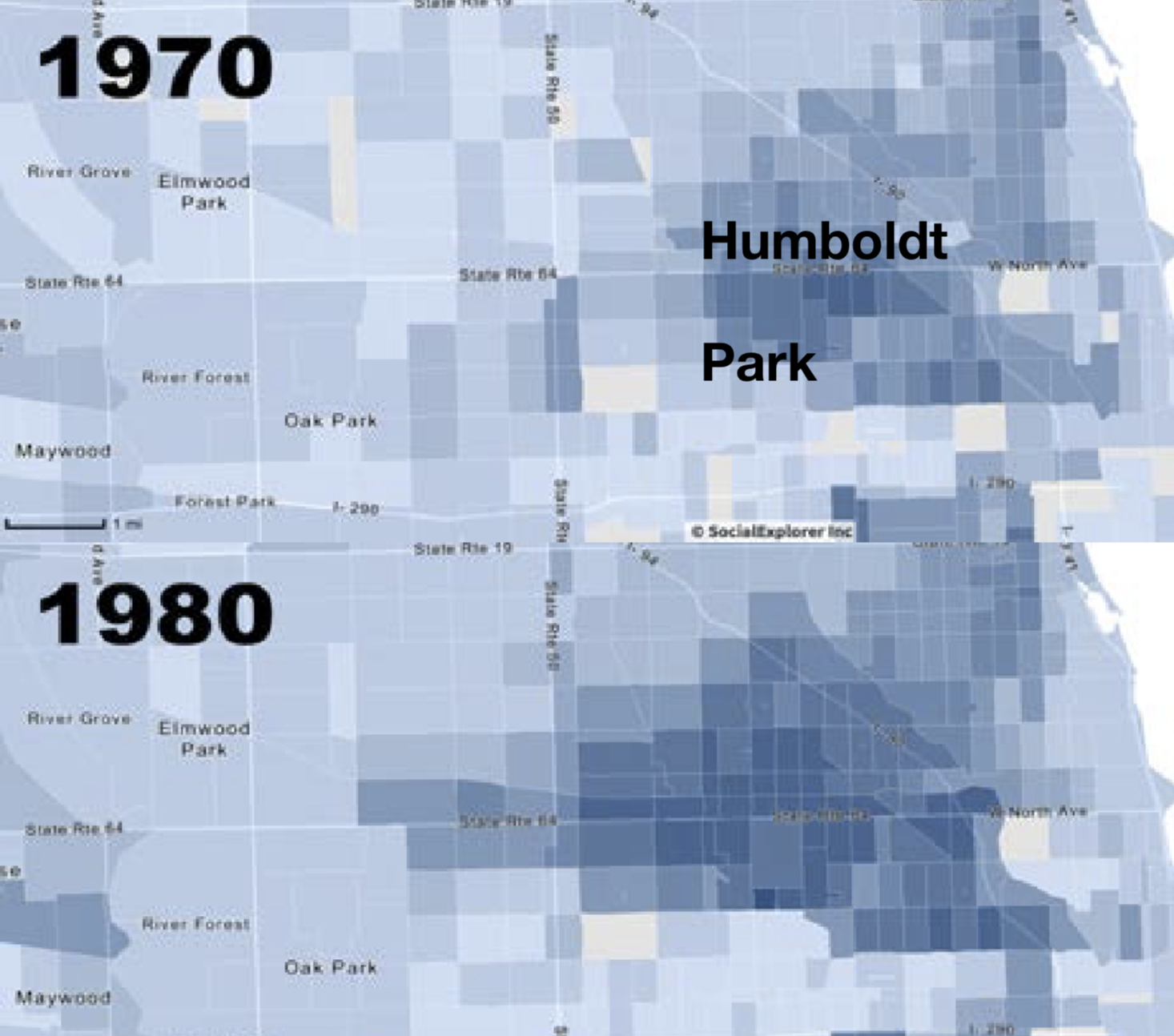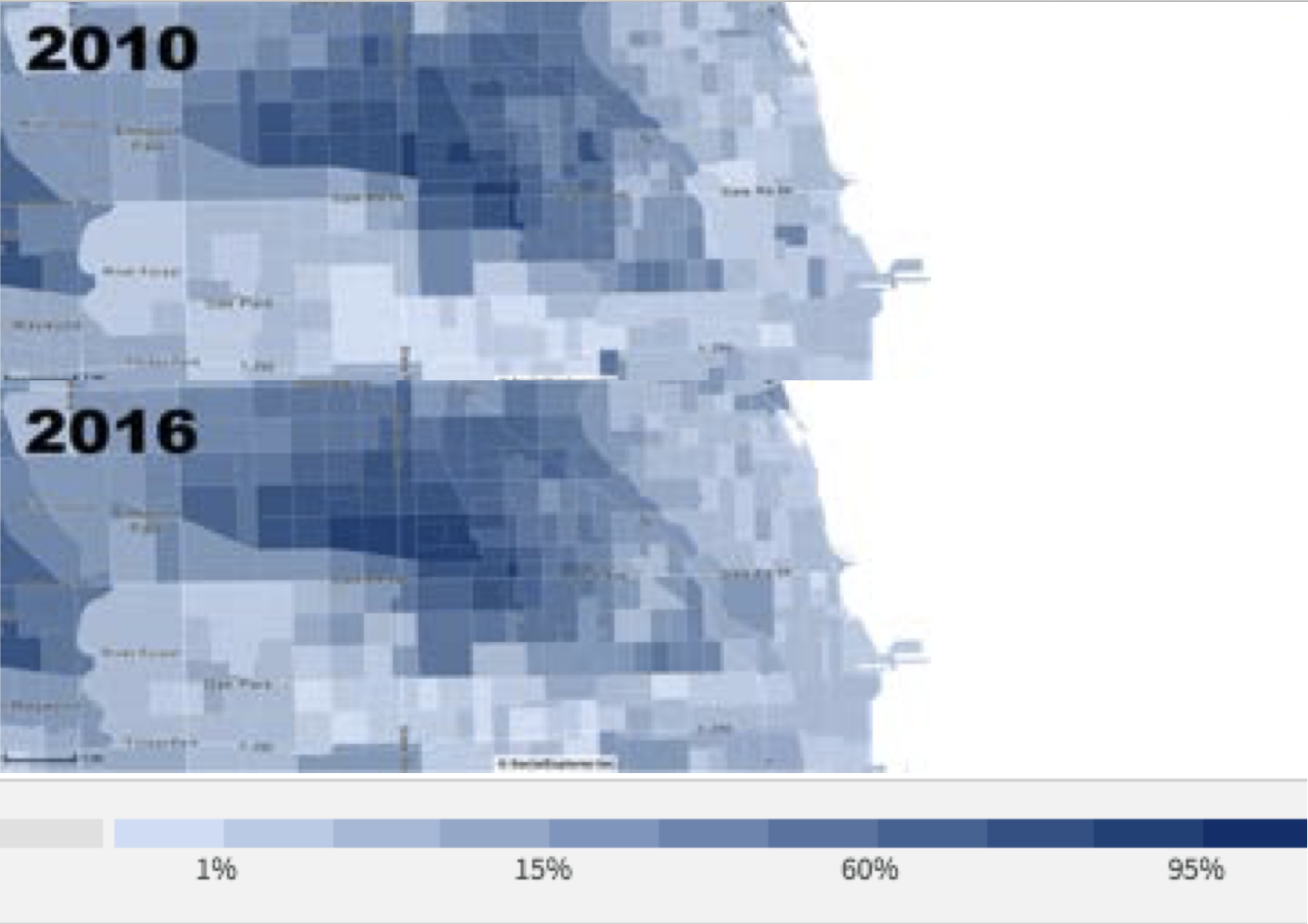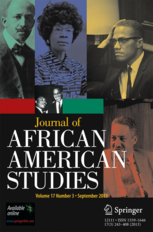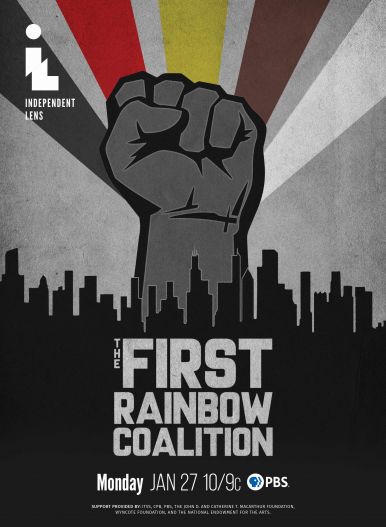
Between the 1970s and 1980s most of the Puerto Rican population was around Humboldt Park and Logan Square.
The Young Lords Organization
Why is this Significant Now?
Cha Cha Jimenez explains how the Young Lords Organization is still relevant nowadays. They might not be as prominent as they were in the 1960s, but their movements helped pave the way for other voiceless communities to stand up and fight for their rights.
Martinez, Blanca, et al. “Interview with Jose Cha Cha Jimenez .” 9 Jan. 2020.
Although it is now 2020 and it has been about 60 years since the Young Lord Organization and all their protests occurred, the problems that many Puerto Ricans and other poor communities faced back then are still problems that occur now. Today's Puerto Rican neighborhood, Humboldt Park, is currently going through gentrification. Along with gentrification, other communities alongside Puerto Ricans are still facing police brutality, racism, and lack of proper help in school and with health issues.
Between 2006 and 2010, Puerto Rican influence areas experienced a 27% rent increase, while their income only increased by 17%. The Median income in 2010 was $39,290 and 62% of Puerto Rican renters and 57% of Puerto Rican mortgage holders were paying more than a 3rd of their income for housing.

Between the 1970s and 1980s most of the Puerto Rican population was around Humboldt Park and Logan Square.

By 2016 we can see that most of the Puerto Rican population has moved northwest.
In 2010 the Puerto Rican community 24% of males and females did not finish highschool and only 15% graduated with a 4 year college degree. Compared to Puerto Ricans in Tampa Florida, students in Chicago are doing slightly worse: in Tampa there were about 21% of males and females that did not complete highschool. On top of the dropout rates, schools in the Humboldt park area are mainly level 1 and 2 schools on a scale of 1-10 (10 being the best)
%AYP stands for the % of students that met or exceeded test standards in reading or math. This image shows the levels of schools near Humboldt Park.
Lack of Proper Health Care
As of 2006 about 72% of Humboldt Park Puerto Rican adults were overweight or obese, as were 67% of their children. 85% of the caretakers of overweight or obese children thought those children were a healthy weight.
Between 2005 and 2006 the rate of diagnosed diabetes was just over 20% for Humboldt Park Puerto Ricans, the highest for any Latino adults. Chicago adults have a 5% rate. On top of that the high blood pressure rate for Humboldt Park was 33% vs. 23% for US whites.
In 2017, 49% of Humboldt Park households received food stamp benefits, and 30% of households accessed emergency food, such as a food pantry or soup kitchen. Despite this support, 46% of households were still food insecure, compared with 13% of households nationwide. (Sinai Community Health Survey 2.0) Although this survey was taken in Humboldt Park, it isn't only Puerto Ricans that are included. This goes to show that there are many groups of people struggling to strive.
What is being done?
Although many Latinos and Puerto Ricans are struggling with gentrification and aren't receiving the proper help required in school and in the community's health, they definitely aren't alone. Schools such as Humboldt Park Vocational Education Center (HPVEC) and Careers in Health and Robert Clemente Highschool have been improving the education that students receive and they have been creating an environment in which students can be more interested in school. An example of this would be Clemente's IB program that began in 2013 and the inclusion of STEM, Fine arts and Culture, Culinary Arts, and many others. HPVEC is an alternative to a 4 year college, which many Puerto Ricans attend. To slow down gentrification many current Humboldt Park residents invite more Puerto Ricans into the neighborhood to try their best to keep that neighborhood alive with Puerto Rican pride. The Puerto Rican metal flag on Division street shows that the Puerto Rican community is there to stay. Around 2011 there were a total of 71 community organizations in the Humboldt Park area that were established to help people with health issues and engage more kids and keep them in school.
The Young Lord Organization might not have been 100% successful in their fight to end police brutality, urban renewal, or have much representation for the latino community, but they certainly did make a positive impact on the lives of the minority with the help of other organizations like the Black Panther Party. The latino community still has a lot to fight for, and there is no doubt about it, however, the barriers that once were are now crumbling and more and more people are getting involved in political issues because of the confidence that the YLO brought to the community. The YLO gave many people confidence to fight and they made minority groups realize that together we are stronger.

Front cover of the Journal of African American Studies (Rivera and Jeffries).
In the December 2019 issue, the Journal of African American Studies wrote about the Young Lords, specifically Cha Cha Jimenez. They commemorate his work in helping the election of the first African American mayor of Chicago in 1983. Cha Cha helped organize "a multiethnic coalition that registered voters" which played a big part in Harold Washington winning the election (River and Jeffries).

Cover of the documentary on PBS that will feature the Young Lords (Santisteban).
While the documentary The First Rainbow Coalition was released in October of 2019, PBS is premiering the film on the 27th of January 2020. This documentary exemplifies the Young Lords and their association with other movements and how they broke barriers and help diversify politicians for the future.